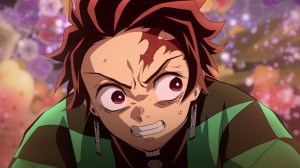One of Demon Slayer’s greatest strengths is the backstories, a common shonen anime trope understood well by its creator, Koyoharu Gotouge. This creates a result that not only adds character depth but also infuses the story with emotional weight. The story is set in a world where powerful demons lurk in the shadows and consume humans to gain more power. The demons can’t be killed by ordinary means, and even crushing their heads won’t result in their deaths. Apart from instant regeneration, they possess superhuman strength, and some can even use unique abilities called the Blood Demon Art. Because of their constant desire for power, far too many people have lost their lives, and their families have suffered as a result of those tragedies.
Videos by ComicBook.com
Whether it’s the demons or their slayers, a majority of characters have suffered greatly in the series, and their backstories are often too heartwrenching. This is why, compared to the other backstories, the one centered around Mitsuri Kanroji is often overlooked. Her past doesn’t include tragedies caused by a demon, and even the reason she joined the Corps is much different from the others. Even so, the backstory delivers just the right amount of emotional depth to one of the series’ best characters.
Mitsuri Kanroji’s Backstory Highlights Themes of Self-Love and Acceptance

Mitsuri grew up in a loving family and wasn’t like any typical girl you’d see. She was physically stronger since childhood and had a hearty appetite. Her hair color changed after eating too much sakuramochi, an absurd explanation not grounded in reality, but Gotouge ran with it to explain her unique appearance; suspension of disbelief definitely helps. More realistic, however, is that the story is set in early 1900s Japan, where social norms for girls were much different from what it is now. She wanted to meet societal expectations and find love, but she would always get rejected for being “different.”

In order to be accepted by those around her, she thought she would have to find a suitable match. But to do that, she had to strip herself of her individuality, which was burdening her. Mitsuri initially tried to change herself to fit the social standards, but she eventually realized that nothing she could do would make them see her true self. She embraced her real identity and strived for happiness in her own way. She eventually left her home and joined the Demon Slayer Corps, a job known for a high death rate. Even in such circumstances, she climbed to the ranks of a Hashira and found someone she deeply loved. A backstory doesn’t need to be tragic to be considered good.
Likewise, a character doesn’t need to suffer or lose their loved ones in order to be considered well-written. Mitsuri’s story is more relatable compared to the rest, and it contrasts with a different kind of struggle than we had seen so far. Her story feels out of place in a broken and twisted world of Demon Slayer, again resonating with her character. She highlights a different kind of strength than the others, while being more emotional and compassionate than most people.









